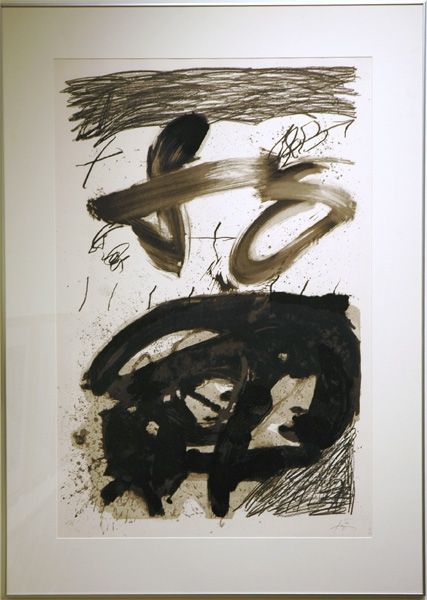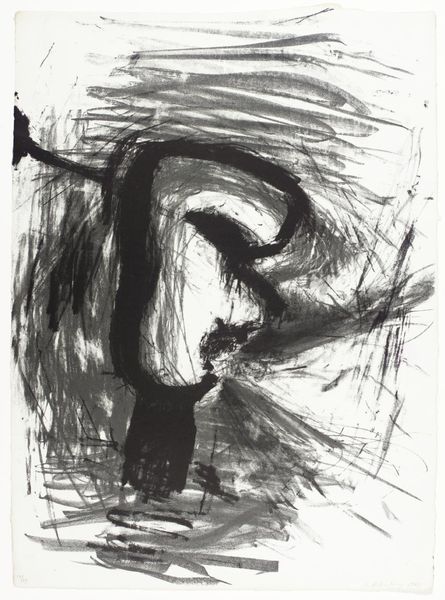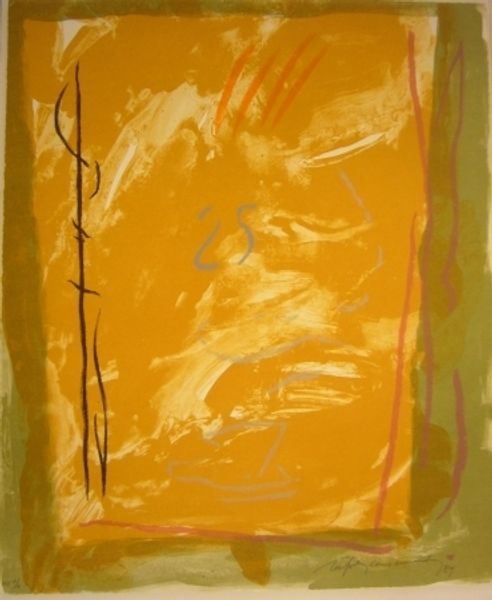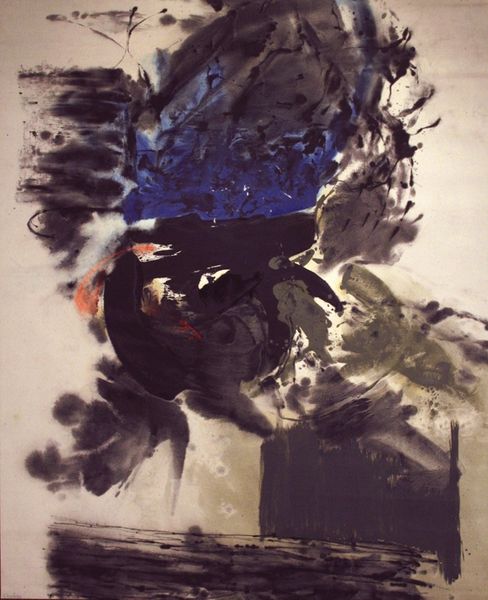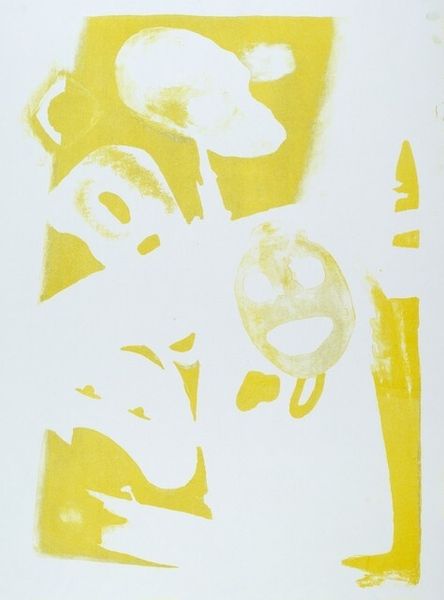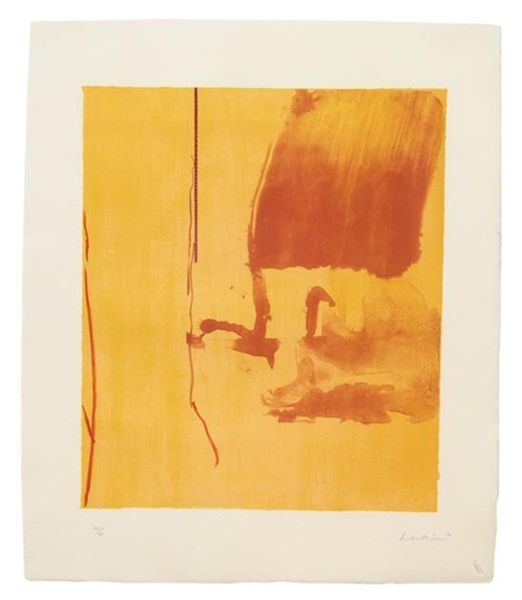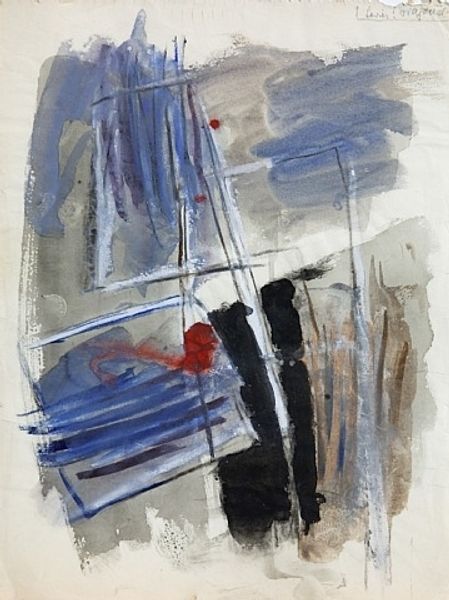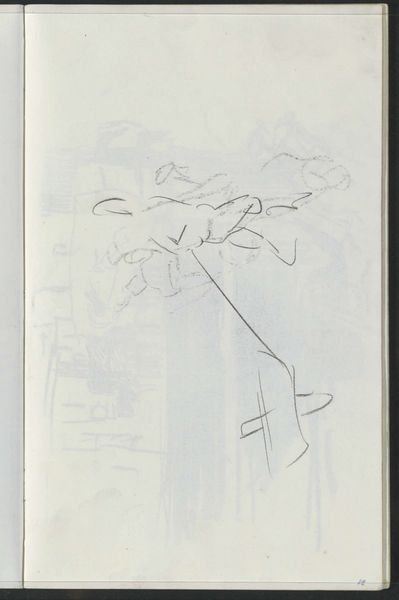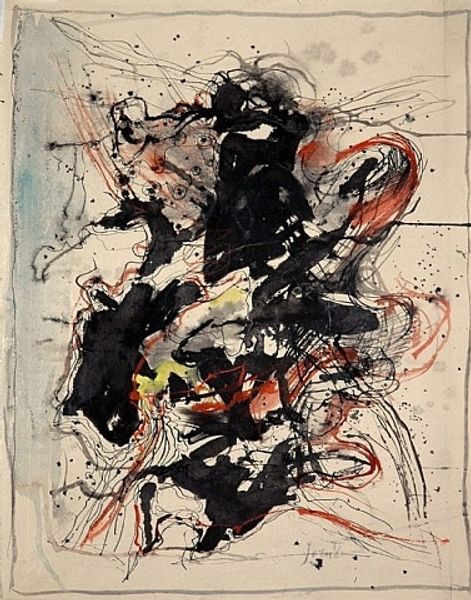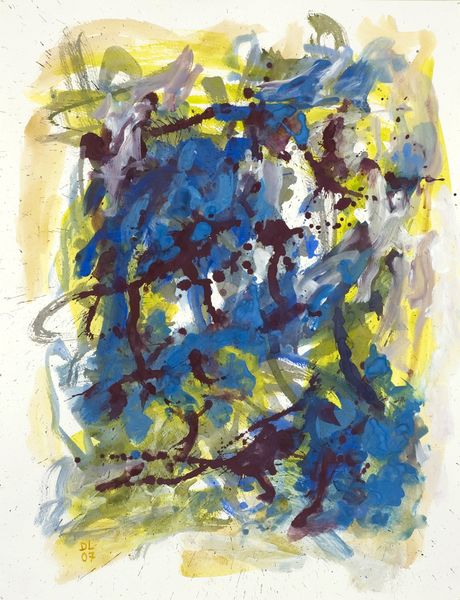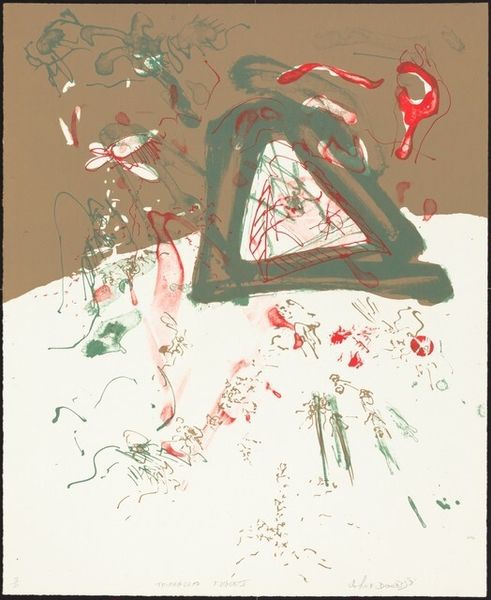
Copyright: Jean Rene Bazaine,Fair Use
Editor: This is 'Vorzugsausgabe 'derriere le miroir' Nr. 197' by Jean Rene Bazaine, created in 1972, using ink, watercolor and drawing. There’s something so delicate yet frantic about the lines—what's your interpretation? Curator: What strikes me is how this piece speaks to the post-war desire to break from traditional modes of representation, not just in art, but in social structures. This isn't just about abstraction; it's about abstracting from the norms of a society deeply wounded by conflict. The rapid strokes of ink disrupt our expected perspectives, like societal upheavals reshaping familiar landscapes. Editor: I see that… so the apparent chaos could be reflecting real-world turmoil? Curator: Precisely. Consider the period, late 1960s and early 70s, a time rife with social and political unrest. This abstraction allows Bazaine to express the anxieties and fractured realities that permeated lived experiences during that era. Look at the color palette –muted oranges juxtaposed with stark inks – does that tell you anything about what narratives might have been present? Editor: It feels unbalanced somehow… incomplete, maybe. Curator: Good. This is what many felt, a need to dismantle and re-evaluate established truths. There’s an almost anxious energy; art became a crucial space to challenge power and propose new ways of seeing and feeling in a world undergoing radical change. The piece captures the essence of these changes. Editor: This makes me see beyond just the aesthetics; it’s about cultural upheaval, and it’s kind of powerful. Thank you! Curator: It's a testament to how art serves as a mirror –derriere le miroir, in fact! –reflecting back at society both its beauty and its discontents, driving necessary dialogue and prompting radical thought.
Comments
No comments
Be the first to comment and join the conversation on the ultimate creative platform.
